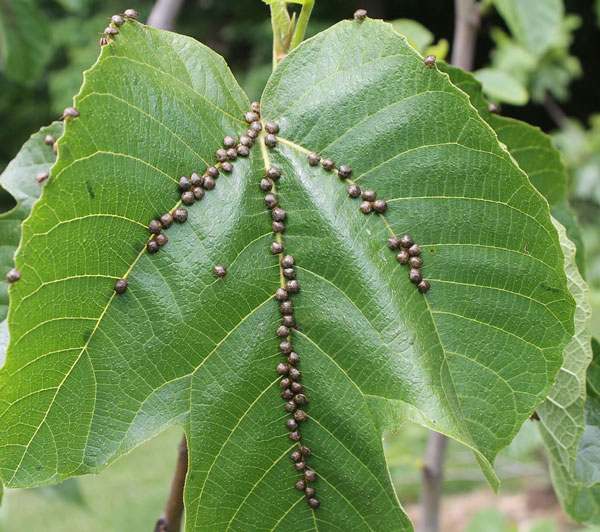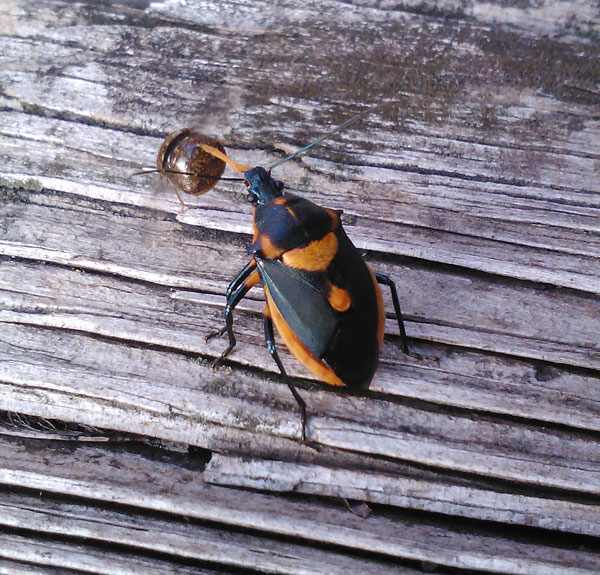Kudzu Bug
go.ncsu.edu/readext?175589
en Español / em Português
El inglés es el idioma de control de esta página. En la medida en que haya algún conflicto entre la traducción al inglés y la traducción, el inglés prevalece.
Al hacer clic en el enlace de traducción se activa un servicio de traducción gratuito para convertir la página al español. Al igual que con cualquier traducción por Internet, la conversión no es sensible al contexto y puede que no traduzca el texto en su significado original. NC State Extension no garantiza la exactitud del texto traducido. Por favor, tenga en cuenta que algunas aplicaciones y/o servicios pueden no funcionar como se espera cuando se traducen.
Português
Inglês é o idioma de controle desta página. Na medida que haja algum conflito entre o texto original em Inglês e a tradução, o Inglês prevalece.
Ao clicar no link de tradução, um serviço gratuito de tradução será ativado para converter a página para o Português. Como em qualquer tradução pela internet, a conversão não é sensivel ao contexto e pode não ocorrer a tradução para o significado orginal. O serviço de Extensão da Carolina do Norte (NC State Extension) não garante a exatidão do texto traduzido. Por favor, observe que algumas funções ou serviços podem não funcionar como esperado após a tradução.
English
English is the controlling language of this page. To the extent there is any conflict between the English text and the translation, English controls.
Clicking on the translation link activates a free translation service to convert the page to Spanish. As with any Internet translation, the conversion is not context-sensitive and may not translate the text to its original meaning. NC State Extension does not guarantee the accuracy of the translated text. Please note that some applications and/or services may not function as expected when translated.
Collapse ▲Photos and text by Debbie Roos, Agricultural Extension Agent.
The kudzu bug (Megacopta cribraria) was introduced to the U.S. in 2009 and is now found in most North Carolina counties. A true bug roughly the size of a lady beetle, it uses its piercing sucking mouthparts to rob plants of water and nutrients and can cause significant yield loss.
The kudzu bug is primarily a pest of legumes such as kudzu, wisteria, beans, and soybeans. Some growers have observed them feeding on sunflowers and they may be observed congregating on many different plants. We are still learning about its hosts and potential damage here in North Carolina. Market farmers will primarily be concerned about kudzu bug damage on edamame and all types of beans. They can cause up to 75% yield loss in soybeans. They also seem to like congregating on figs and grapes but as far as we can tell they don’t seem to be feeding on these crops. However, this is a new pest so we don’t yet know all its hosts, and it may acquire new hosts here in the U.S.
Fall 2012: The cooler weather of fall has prompted many calls from farmers and gardeners asking about their kudzu bug invasion. I visited a few farms last week and observed kudzu bugs all over figs, pole beans, scarlet runner beans, redbuds, roses, peppers, and other plants. I had never seen anything quite like it. The bugs are looking for places to spend the winter and in the fall they will often invade homes seeking overwintering sites. Some beekeepers have even reported seeing kudzu bugs congregating near the entrance to hives looking for a warm place to spend the winter (they do not present any threat to honey bees)! Entrance reducers will help the guard bees keep out unwanted visitors in the fall.
Spring 2013: I am getting lots of calls again from folks seeing kudzu bugs amassing on figs, magnolia, bronze fennel, and other plants. They can also been seen on the exterior of houses. These bugs have emerged from their overwintering sites and are looking for reproductive hosts (kudzu and soybeans).
We do not yet know of organic control strategies for controlling this pest. Because the bugs usually feed in groups, small-scale farmers and gardeners can brush them into a pail of soapy water when faced with infestations during the growing season. Growers are advised not to squish the kudzu bugs with their bare hands because they release a yellow substance that can cause welts and inflammation. Some of our beneficial insects have discovered this new pest – both assassin bugs and predatory stink bugs have been observed feeding on kudzu bugs.
According to NC State University Entomologist Dominic Reisig, “the kudzu bug is incredibly prolific, and has gone from nearly undetectable to overwhelming in a few generations.” Dr. Reisig expects kudzu bug populations to be much worse in 2013 than in previous years. He is part of a team of NC State University researchers working on biological control of the kudzu bug. Next year they plan to release a parasitic wasp that targets kudzu bug eggs in hopes of reducing populations.
For more information:
Kudzu Bug: a Nuisance and Agricultural Pest – North Carolina State University
Kudzu Bug Distribution – EDD Maps
Kudzu Bugs Are NC’s Latest Imported Scourge – News & Observer
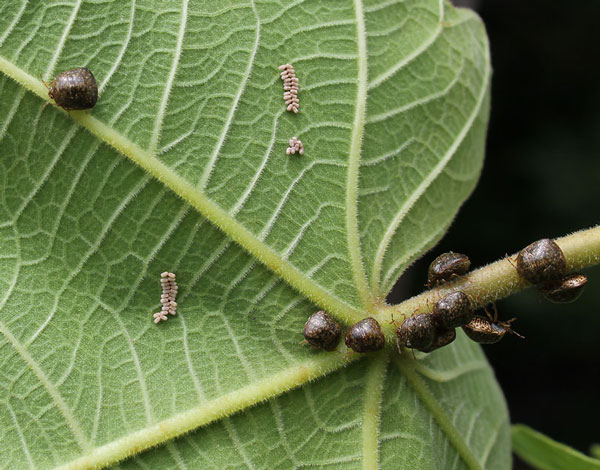 Kudzu bugs and egg clusters on fig leaf in May.
Kudzu bugs and egg clusters on fig leaf in May.
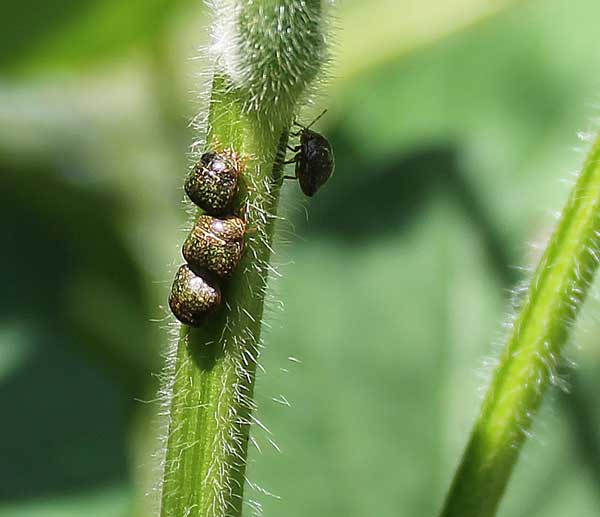
Kudzu bugs on edamame. They feed on stems and leaves (not on beans).

Kudzu bugs on edamame.
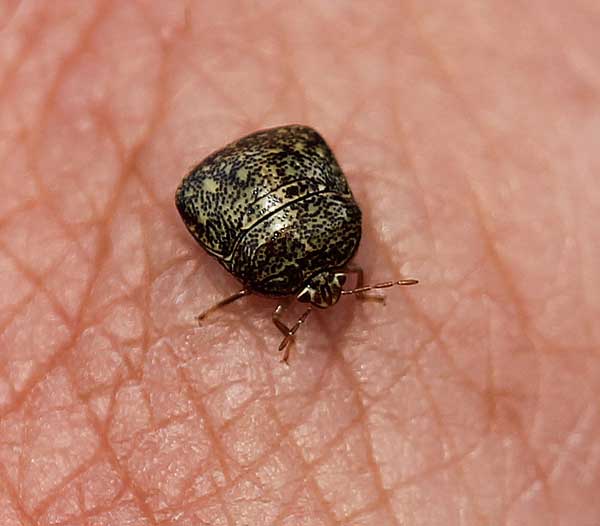
Close-up of kudzu bug.
 Kudzu bugs on fig in late October
Kudzu bugs on fig in late October
 Kudzu bugs feed on pole beans in late October
Kudzu bugs feed on pole beans in late October
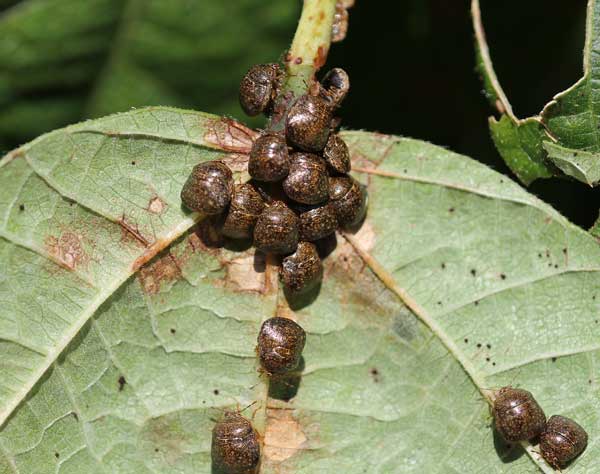 Kudzu bugs on pole bean in late October
Kudzu bugs on pole bean in late October
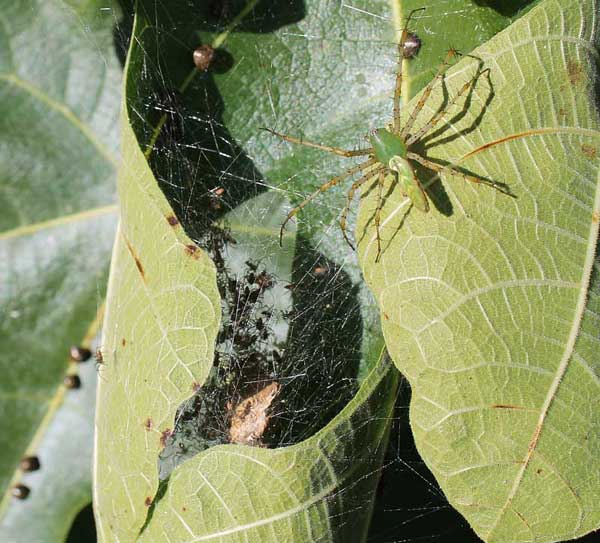 Green lynx spider and newly hatched spiderlings with kudzu bugs on fig bush
Green lynx spider and newly hatched spiderlings with kudzu bugs on fig bush
Return to Index of Pests




